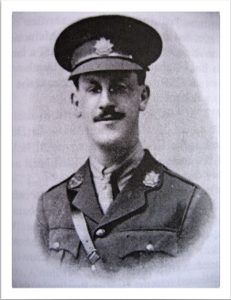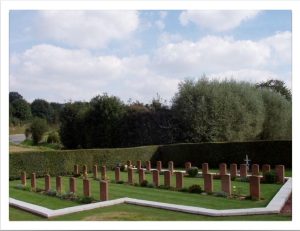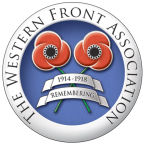1st Battalion Border Regiment

Herbert Sidney Park was born in Stroud on 3 June 1894, the son of Sidney Benyon Park and Ellen Park, who also had a daughter and the family lived at Highmead, Field Road, Stroud. He was educated at Wycliffe College, Stonehouse from 1904 – 1910, where he was a member of the Literary and Debating Society and a School Senior (or prefect).
In January 1913 he was appointed as a clerk in the Civil Service, working in the Insurance Audit Department of the National Health, where he was held in high esteem for both character and abilities.
The Civil Service was reluctant to release him for military service but in 1916 he joined the 28th Battalion London Regiment, better known as the Artists’ Rifles, before receiving a commission into the Border Regiment in March 1917.
He was posted to the 1st Battalion while it was in a training area at Candas (about 50km south west of Arras) on 9 June 1917. On 26 June the Battalion moved into the front line north of Ypres, where it stayed until 7 July, giving Herbert his first experience of the trenches. He wrote: “These days, chiefly spent in strong posts and pillboxes, were most interesting and instructive, and I found that I didn’t get ‘the wind up’ nearly as much as I thought I should.”
On 31 July, the opening day of Third Ypres, the Battalion supported the Guards Division’s attack on Pilkem Ridge, making roads in the Boesinghe area before taking its place in the front line on 12 August.
On the 15th it began to move off in preparation for its participation in the Battle of Langemark. The Battalion was relieved on the 17th, having spent 18 days at the front losing 181 officers and men, killed, wounded or missing.
Seriously under strength, the Battalion moved to a rear training area at Bailleulmont which is between Arras and Doullens. Herbert had now become its bombing officer and on 26 October 1917 he was teaching a group how to use a bomb when one went off spontaneously, killing the Private holding it and Herbert. He was aged 22.
Herbert is buried inside Bailluelmont Communal Cemetery and remembered on the Wycliffe School Roll of Honour.
(Acknowledgement to ‘Lest we Forget: The Stroud District & its part
in the Great War 1914-1919’ edited by Chas Townley)

Bailluelmont Communal Cemetery
